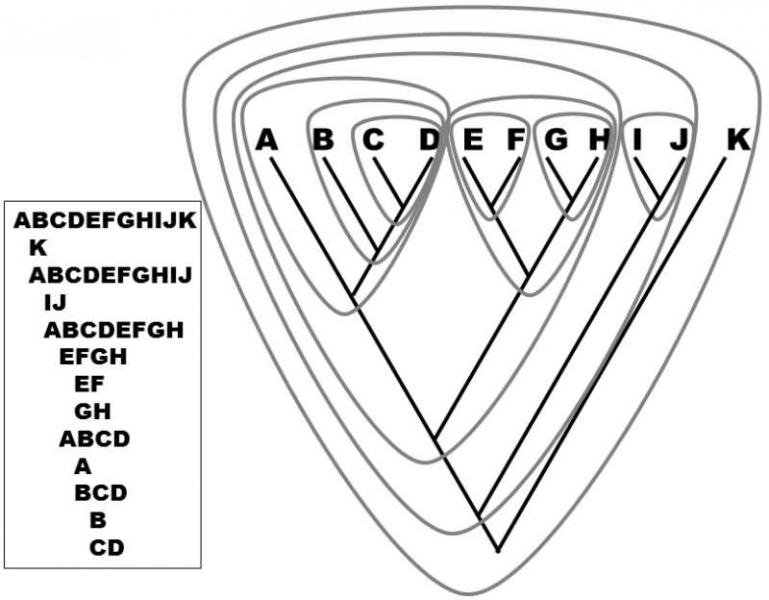XXV.4 Knowledge of cladogenesis provides information on which taxa must not be created, but not on which taxa should or must be created
The basic rule of taxonomy requiring the creation of only monophyletic taxa unambiguously specifies which taxa must not be created. The taxonomic systems created by evolutionary systematists must respect only the prohibition of creation of polyphyletic taxa. In practice, this means that taxa may be created on the basis of both apomorphy and also plesiomorphy, but must not be formed on the basis of homoplasy (see XXIII.6). Cladists must respect the prohibition of creation of taxa whose species would not have an exclusive ancestor, i.e. both polyphletic taxa and paraphyletic taxa. In practice, this means that taxa must not be defined either on the basis of homoplasy or on the basis of shared plesiomorphy (synplesiomorphy).
However, there are no similar rules that would, on the other hand, specify which taxa should or must be created. For example, if we wanted to define (and name) all the monophyletic groups of species existing in a studied phylogenetic line, i.e. all groups of organisms that have an exclusive ancestor (all clades), then the number of thus-created groups is roughly the same as the number of species that we would want to classify and the number of categories of taxa would also be impractically large. The number of theoretically creatable taxa also including paraphyletic taxa would be even greater. Cladists favor a radical approach, i.e. the creation and cataloguing of all existing clades; however, they must simultaneously relinquish the possibility of formalizing and naming the individual taxonomic levels and naming of the specific created clades. Consequently, cladists do not create taxa but only their operative taxonomic units, in this case monophyletic clades (Fig. XXV.3).

Fig. XXV.3 The cladistic system. The right-hand part depicts a cladogenesis scheme with designation of the operational taxonomic units (clades), while the left-hand part shows one of the possible ways of writing the system created on the basis of the given cladogenesis scheme.
Evolutionary systematists hold the opinion that it is necessary to define and name only some of the existing holophyletic and paraphyletic groups of organisms. Knowledge of the cladogenesis of the particular phylogenetic line is of no help in deciding whether a particular group of organisms deserves the creation of its own taxon and, in the end, it is necessary to rely on a subjective sense that a particular monophyletic line should be defined as a separate taxon at a certain level and that it should be assigned a name in accordance with the rules of scientific nomenclature.
